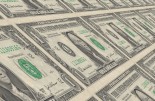Monex: Powell suggests Fed tightening cycle will drop down a gear

On Wednesday , the Federal Reserve voted unanimously to raise the target range for the federal funds rate by 75 basis points to 2.25-2.5%, in line with expectations.
While the policy statement reflected the latest downturn in growth conditions, as evidenced by the most recent round of preliminary PMIs and the drop in regional Fed nowcasts of GDP, the decision to continue tightening monetary conditions at a rapid pace reflects the ambition of policymakers to get interest rates expeditiously to a neutral level given still-robust labour market conditions and elevated price pressures.
The initial market reaction to the decision was mildly dovish, as expected, with the US dollar selling off less than a tenth of a percent against its G10 peer currencies. This was largely driven by money markets pricing out the tail risk of a full percentage point increase; an outcome that swap traders assigned a 10-15% probability.
Additionally, some hawkish pricing was likely taken off the table further out of the US rates curve as no voting members dissented in favour of a larger hike. Nevertheless, with 75bps widely telegraphed and expected by market participants, the response in financial markets was fairly tepid, putting the emphasis on Chair Powell in the press conference.
The initial boost in risk assets following the Fed’s policy decision was extended throughout Chair Powell’s appearance at the press conference as the overall tone he took suggested that US rates are still following the path set out in June’s Summary of Economic Projections.
With the June projections pointing to a year-end rate in the region of 3.25-3.5%, this implies that the pace of policy tightening is likely to slow from hereon in, starting with a 50bp hike in September. Short-term interest rate markets responded accordingly, with the pricing of September’s decision drifting closer to a 50bp base case and year-end pricing dropping 10bps to 3.3% in overnight interest swaps.
Broad dollar slumps while equities rally on downgraded expectations for Fed tightening
While a slowdown in the Fed’s hiking cycle was our prior belief coming into yesterday’s meeting, comments by Powell suggest core inflation needs to throw a serious tantrum for the FOMC to continue tightening at the current pace. This is because headline inflation is expected to fall in the coming months due to the reduction in oil benchmarks, which is already having an impact on fuel prices as per Gasbuddy.
Should the decline in inflation that we expect occur, it will alleviate some of the pressure on the Fed to react to marginal upticks in core inflation prints given the sensitivity of inflation expectations to both headline inflation and gas prices, effectively marking the end of its front-loading phase. From there, the Fed presently deems it sufficient to take rates to a 'moderately restrictive level' in order to combat core inflation pressures, meaning there is little upside risk at present to the 3.5% projection in June’s SEP.
While risk assets were fuelled by yesterday’s Fed decision, we remain hesitant to bookmark the July Fed meeting as the inflection point for the dollar. With global macroeconomic conditions remaining highly fluid and US inflation pressures still holding the potential to force the Fed to eat its proverbial hat, we think the dollar will retain support in the coming months.
Ahead of September’s meeting, where we currently think the Fed decision to slow the hiking cycle will remove the support from US rates for the current strong dollar, we will be closely monitoring the persistence and momentum in core inflation pressures in the July and August CPI reports, the remaining inflation reports due ahead of the September 21st Fed decision.







